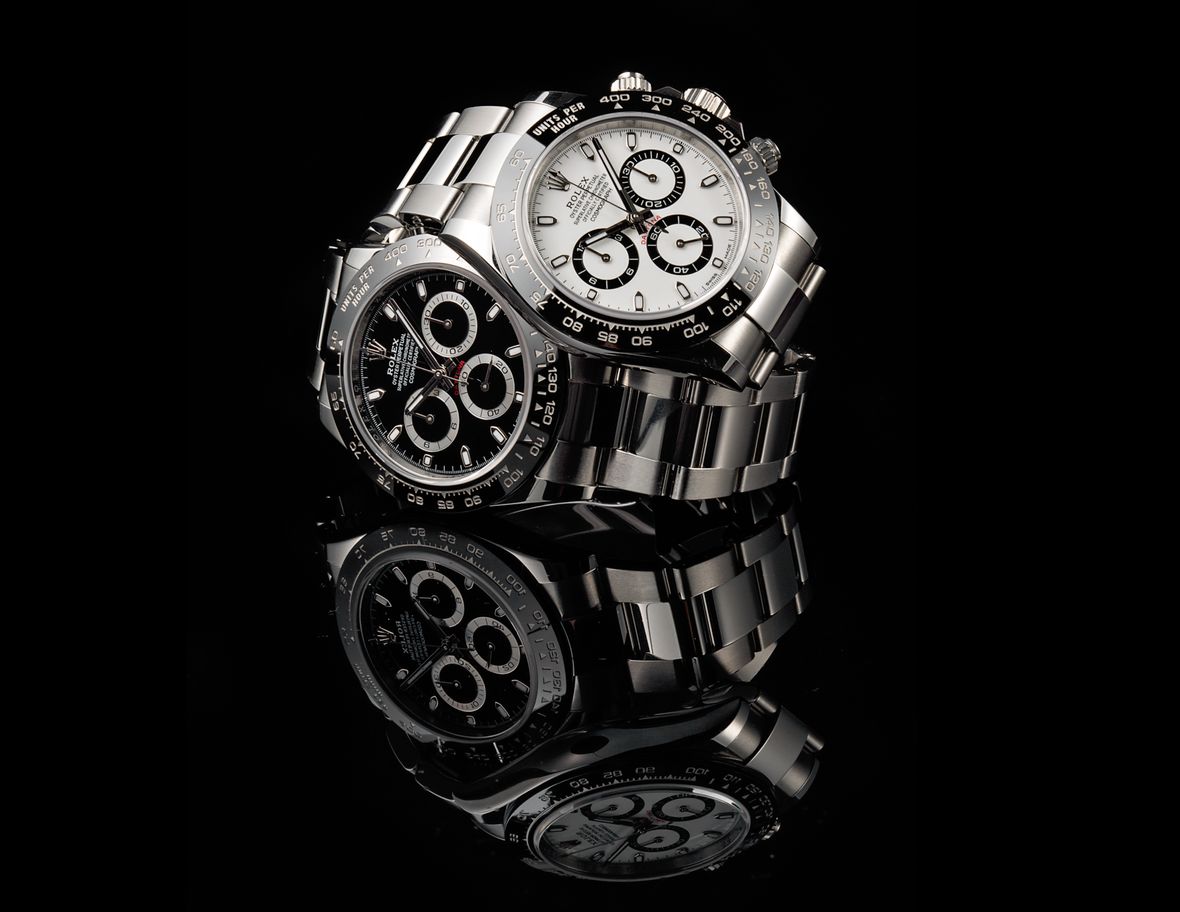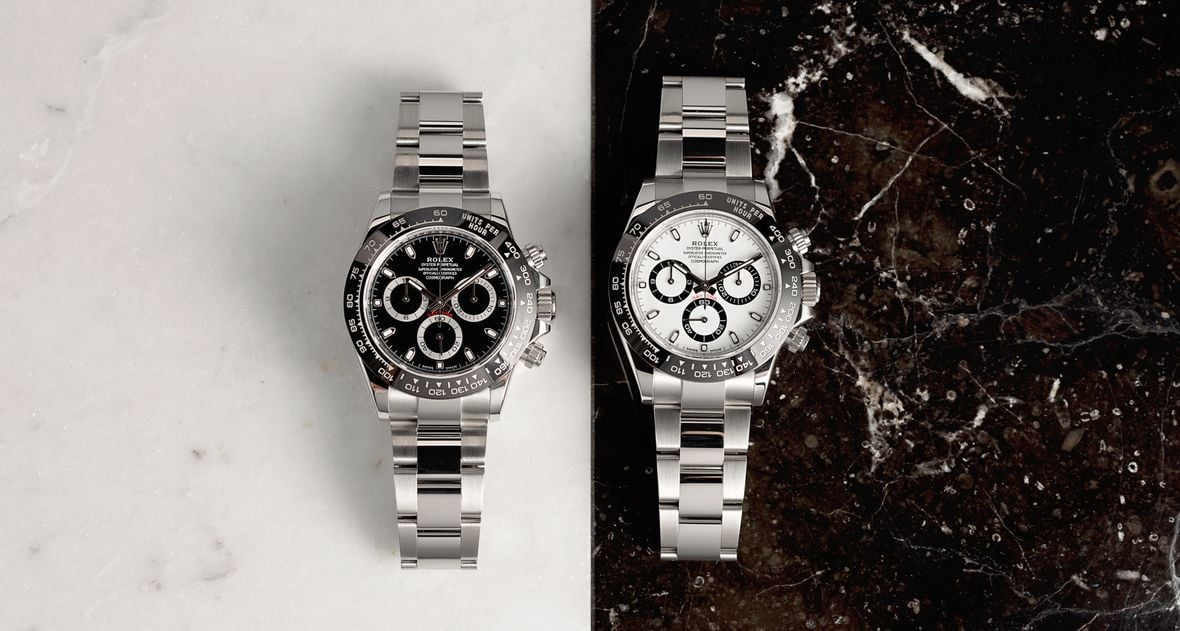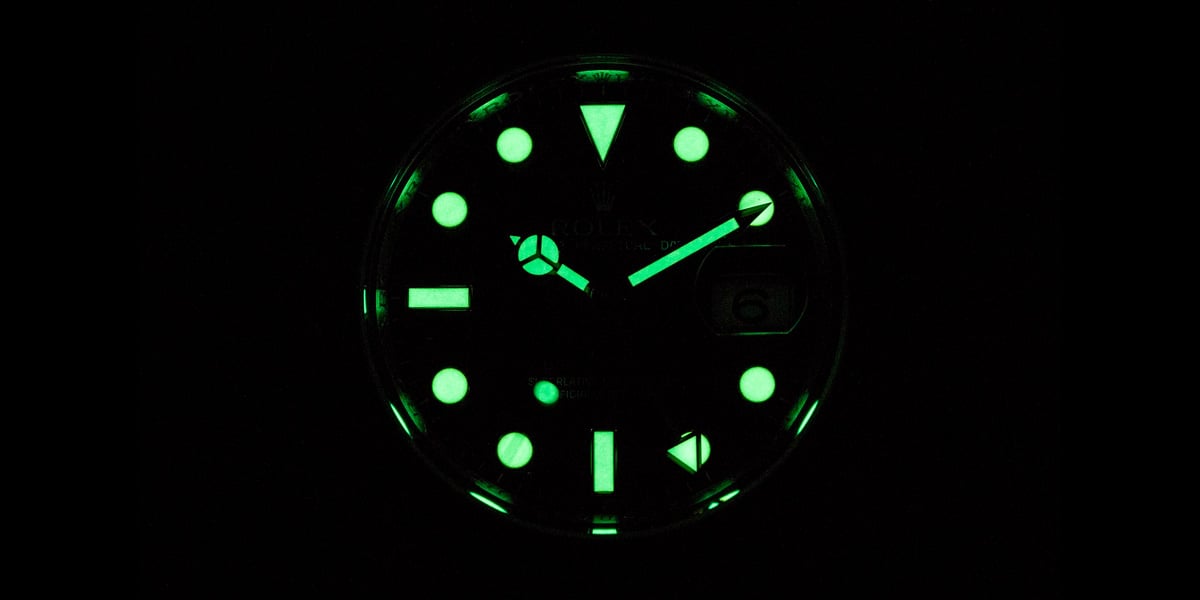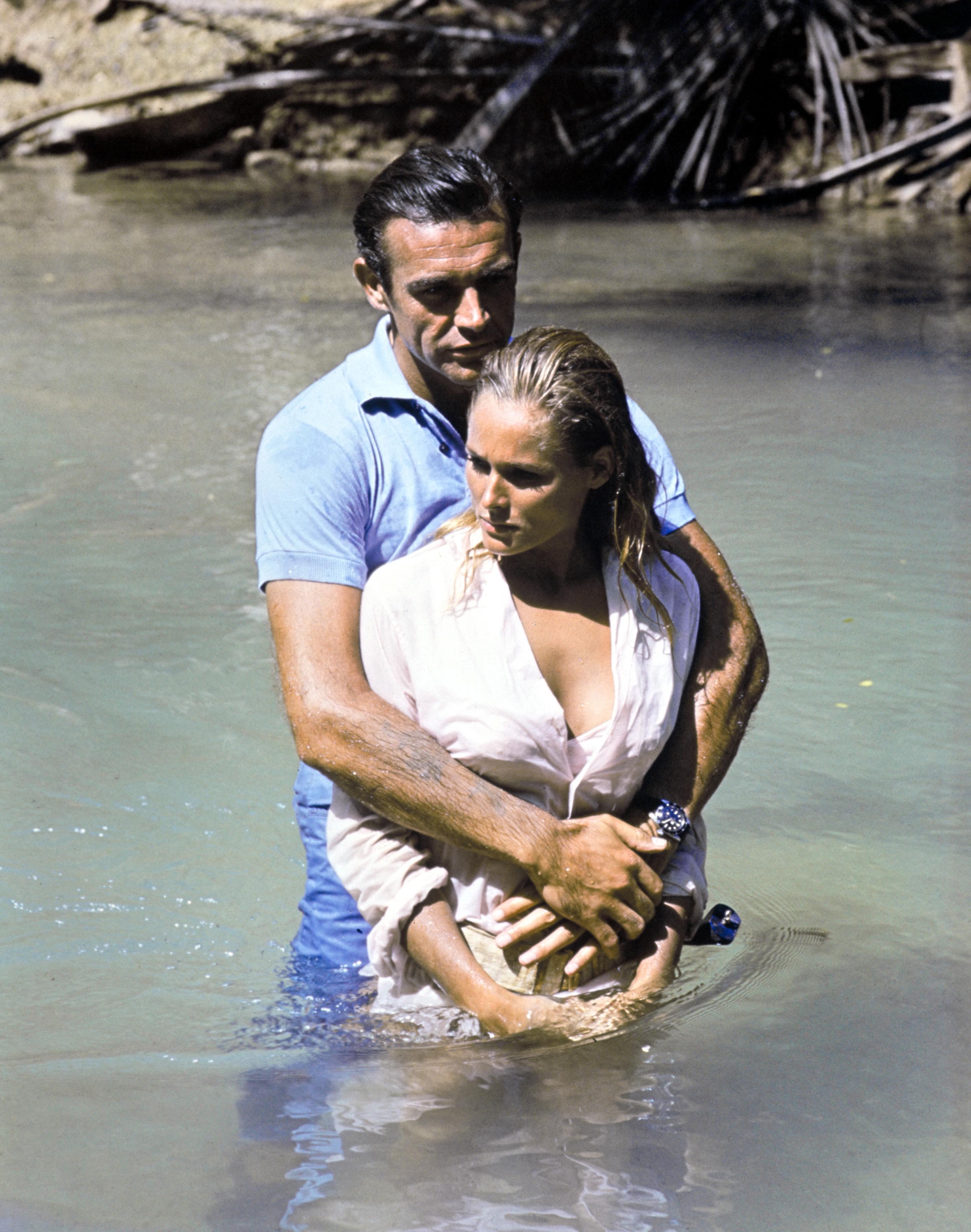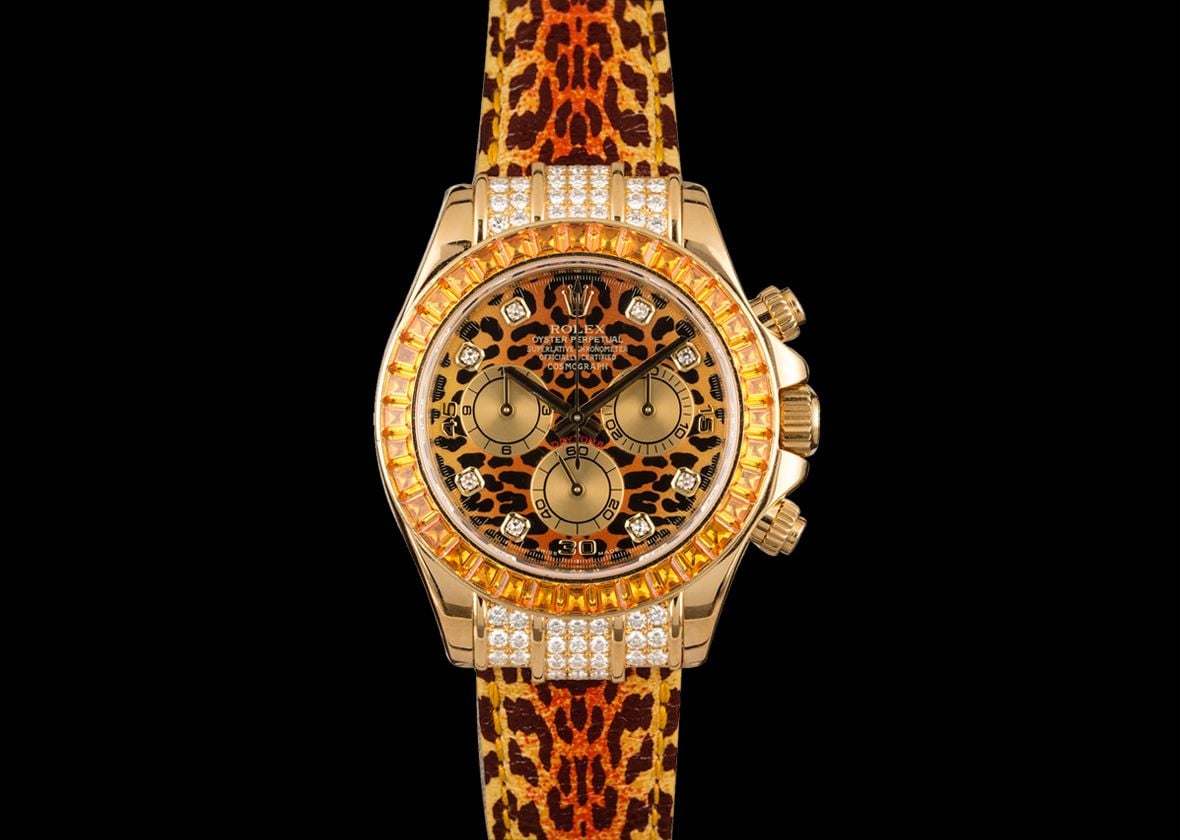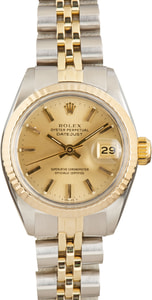The Rolex Daytona has seen many upgrades in the 60+ years since its initial release, but the Rolex Daytona reference 116500LN might just be single the most noteworthy update to occur to Rolex’s famous chronograph wristwatch since it first received an in-house movement more than twenty years ago. Rolex has been producing stainless steel versions of the Daytona for as long as the model has been a part of the brand’s catalog. However, the ref. 116500LN is the first steel Daytona model to feature a ceramic bezel, and although it represents the least expensive model in the Rolex Daytona collection (at least when purchased at retail), it is arguably the single most desirable modern Rolex watch in existence and one that is virtually impossible to buy from an authorized retailer without spending a minimum of several years on a waiting list.
In fact, the Rolex Daytona 116500 was so highly anticipated at the time of its release at Baselworld 2016 that the moment it was launched, it instantly sold out at every retailer around the globe. Even now, more than half a decade after it was first introduced, the stainless steel and ceramic Daytona ref. 116500LN remains one of the most coveted Rolex watches in the entire world and if anything, it has only become more difficult to purchase at a retail level. Global demand for the Daytona ref. 116500LN far exceeds Rolex’s maximum output, and although there have been numerous ultra-desirable stainless steel Rolex watches released since the 2016 launch of the steel and ceramic reference 116500LN, the waiting lists for this fan-favorite model have only continued to get increasingly longer each year. Let’s take a closer look at the Rolex Daytona 116500LN and the key features that make it one of the most desirable luxury watches in existence.
Rolex Daytona 116500LN
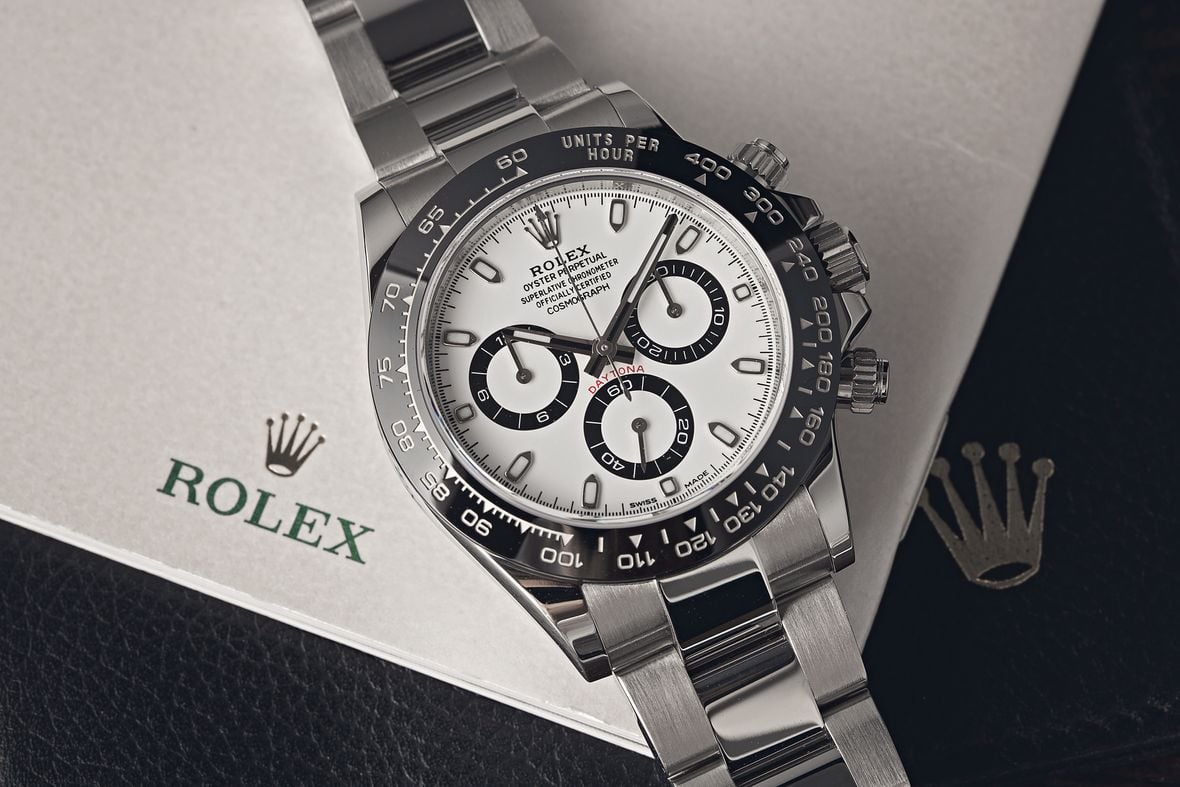
Daytona 116500LN Key Features:
- Reference Number: 116500LN
- Year of Introduction: 2016
- Case Size: 40mm
- Materials: Oystersteel (904L Stainless Steel)
- Functions: Time w/ Running Seconds, 12-Hour Chronograph
- Dial: Black or White w/ Luminous Hour Markers
- Luminous Material: Chromalight
- Bezel: Fixed, Black Cerachrom w/ Tachymeter Scale
- Crystal: Sapphire (Flat)
- Chronograph Pushers: Screw-Down
- Winding Crown: Triplock (Screw-Down)
- Movement: Rolex Caliber 4130
- Water Resistance: 100 Meters / 300 Feet
- Strap/Bracelet: Oyster Bracelet (Stainless Steel)
- Clasp: Oysterlock Safety Clasp w/ Easylink Extension System
- Approx. Price (USD): $13,150 (New); $35,000 – $45,000 (Pre-Owned)
Click here for our Ultimate Buying Guide on the Rolex Daytona.
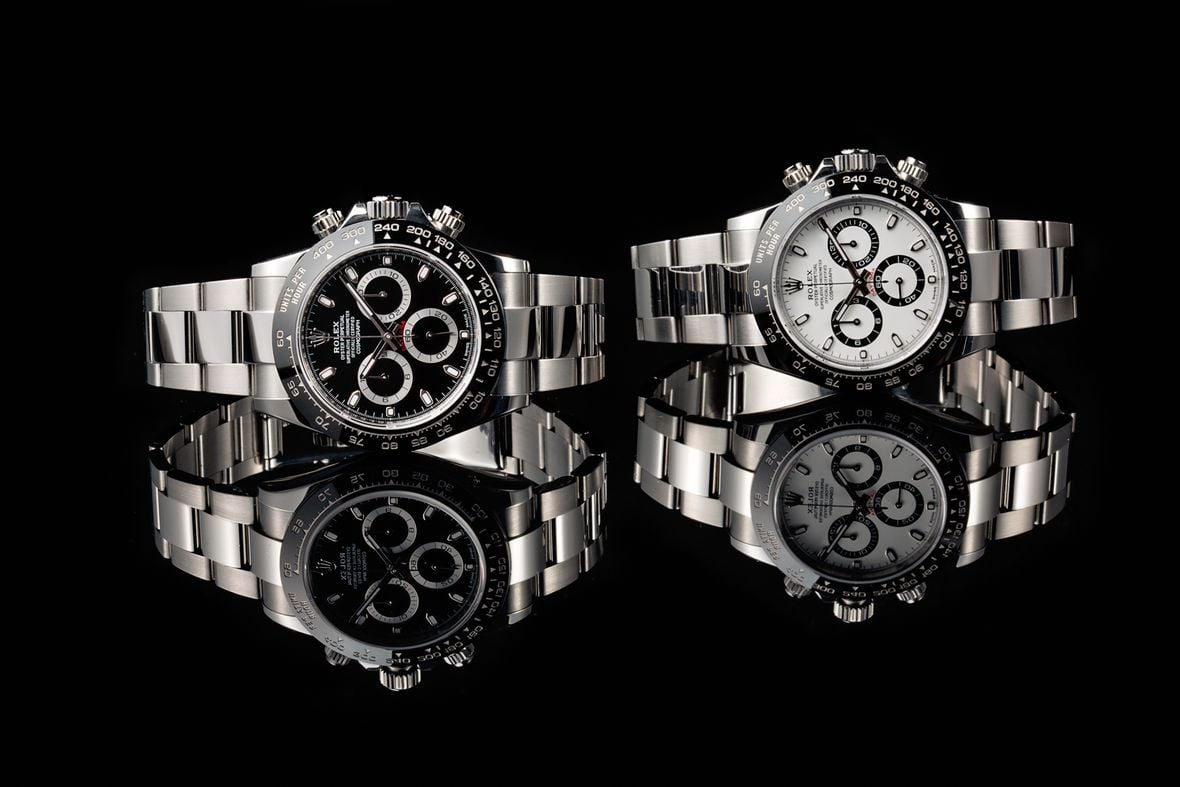
History of the Rolex Daytona
The Rolex Daytona has a long, rich heritage as one of the world’s premier luxury sports watches. First introduced in 1963, the Cosmograph Daytona has gone through many upgrades and iterations, and along the way, it has become one of the brand’s most well-known, valuable, and highly sought-after timepieces.
Today, we are currently in the third generation of the Rolex Daytona. This third-generation was first launched by Rolex in 2000 and it is defined by the collection’s single most significant update thus far: Rolex’s very own, in-house chronograph movement. While the third generation of the Rolex Daytona retains many of the same core design traits that were first introduced with the second generation, there have also been some other noteworthy upgrades.
One of the ways that you can always tell this generation apart is that watches from it will all have six-digit reference numbers, with some followed by letters depending on their bezel type. For example, the ref. 116500LN has the letters “LN” at the end to denote the use of a black ceramic bezel – something that Rolex first started fitting to certain Daytona references back in 2011. Additionally, the running seconds indicator moved from the 9 o’clock location (on Zenith Daytona models) to the 6 o’clock position on the generation with in-house movements, and this also can serve as a way to visually identify the correct generation of a Rolex Daytona watch.
Rolex Daytona Timeline
- 1959: First Daytona International Speedway Race officially opens.
- 1962: Rolex becomes the Official timekeeper of the Daytona International Speedway; first Rolex 24 at Daytona race.
- 1963: First Rolex Cosmograph Daytona introduced (ref. 6239).
- 1964: The word “Daytona” is added to the dial.
- 1965: Screw-down chronograph pushers are added to the Rolex Daytona collection (ref. 6240).
- 1988: The second series of Daytona watches is introduced with self-winding movements (based on the Zenith El Primero).
- 2000: The third series of Daytona watches is introduced with Rolex’s first in-house chronograph movement (Caliber 4130).
- 2011: Rolex outfits the Everose Daytona with a Cerachrom bezel, making it the first Rolex watch to feature a single-piece ceramic bezel.
- 2016: The Rolex Daytona 116500LN receives a Cerachrom bezel (first stainless steel Daytona with a ceramic bezel)
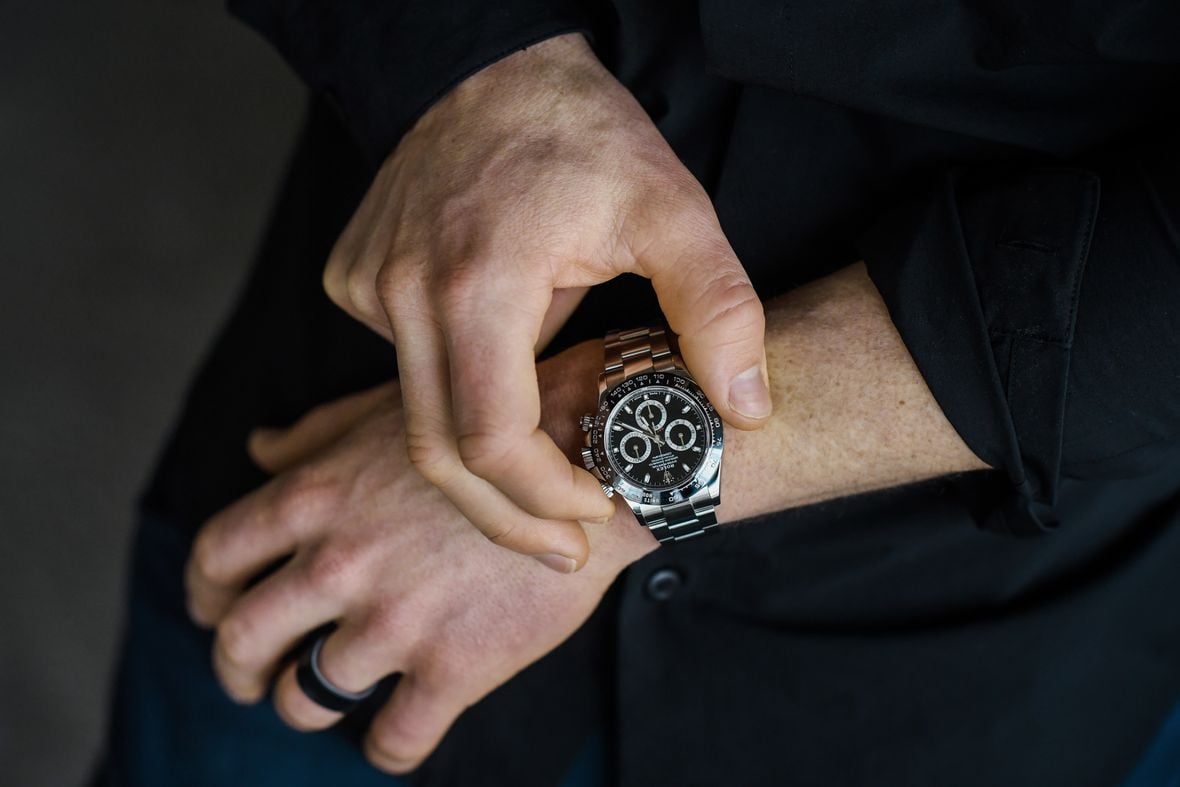
Rolex Daytona ref. 116500LN in Stainless Steel and Cerachrom
Before we take a closer look at the ceramic bezel on the Rolex Daytona ref. 116500, let’s first take a minute to explain what Cerachrom is and why it’s so desirable and important when it comes to modern Rolex watches. The name “Cerachrom” is a combination of the words “ceramic” and “chrom” (the ancient Greek word for color). This is the name Rolex chose to identify its patented, ceramic material that is used across the brand’s contemporary sports watch collections and comes in a handful of different colors.
Prized for both its attractive qualities and resilience, Rolex’s Cerachrom ceramic bezel is virtually scratch-proof and completely impervious to fading, making it an incredibly tough and hard-wearing watch component. Unlike the scratched, cracked, and faded aluminum bezels of vintage Rolex watches, a Cerachrom bezel should retain the same rich color and glossy appearance many decades from now.
Despite being a far superior material from a longevity standpoint, Cerachrom is not without its drawbacks. While it is extremely hard and near-impossible to scratch, Cerachrom can be somewhat brittle and prone to shattering if it gets knocked hard enough at just the right angle. Plus, it is also a lot more expensive to replace if you do somehow manage to damage it. However, Cerachrom is a superior material for all intents and purposes, and unless you drop your watch on a hard surface or it suffers a similar sort of significant impact, its minor drawbacks will never really play into your actual ownership experience. Consequently, many people are willing to overlook these minor faults in return for a highly attractive component that will not show signs of everyday wear and use.
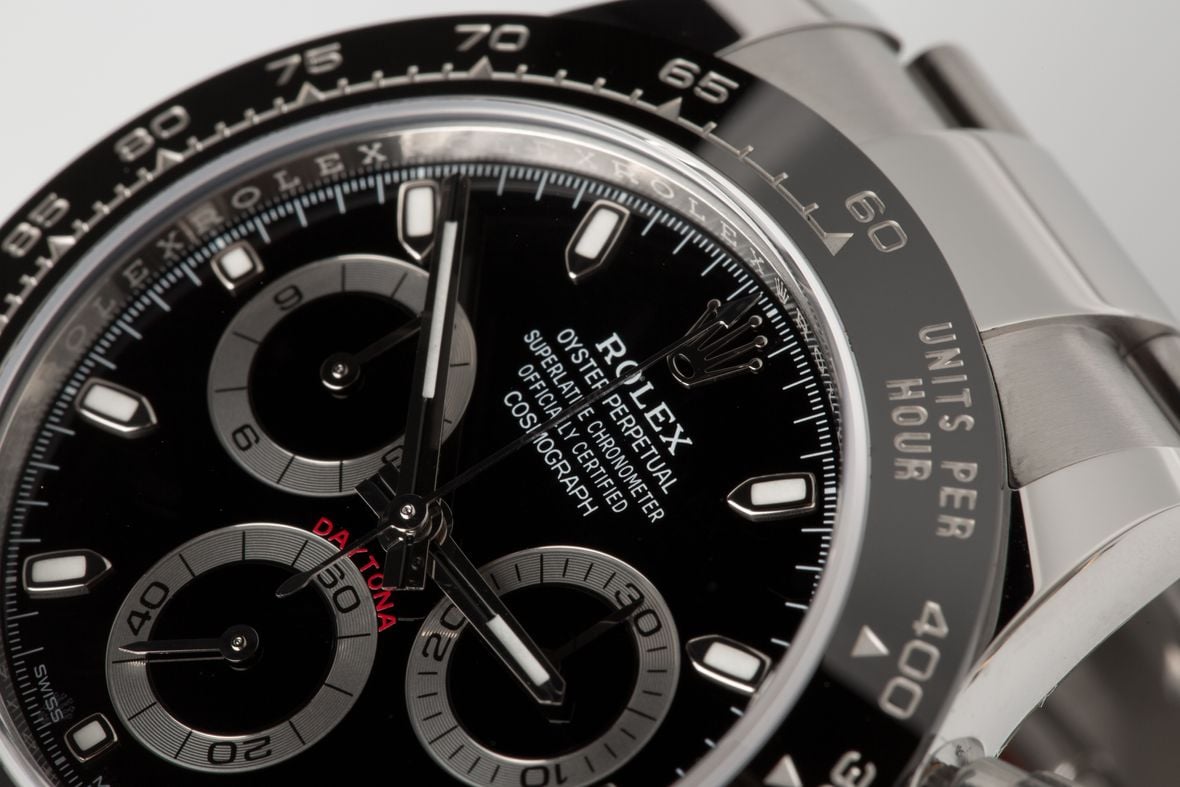
About Rolex Cerachrom Bezels
Only first introduced in 2005, the modern Cerachrom bezel was first debuted on the redesigned GMT-Master II, eventually making it onto the stainless steel Daytona in 2016 with the release of the ref. 116500LN. Now, it is important to note that before 2016, Rolex had introduced Cerachrom bezels to other models within the Daytona collection, but only the solid Everose gold and Platinum editions. While these are incredibly desirable pieces, they are also unapologetically luxurious and out of the price range for many collectors. However, these first models paved the way for the rest of the collection by being the first Cerachrom bezels to be crafted from a single piece of ceramic.
Many collectors thought Rolex was going to release stainless steel Daytona with a ceramic bezel for the collection’s 50th anniversary in 2013, but the model that debuted that year was the solid 950 platinum version with its striking ice blue dial and chestnut brown Ceracrhom bezel. It would not be until 2016 that Rolex would finally decide to use its Cerachrom technology to update its stainless steel Daytona with the release of the ref. 116500LN. With its 40mm stainless steel Oyster case, black Cerachrom ceramic bezel, and stainless steel Oyster bracelet, the brand-new Daytona was exactly the Rolex chronograph that everyone wanted.
However, just because the stainless steel and ceramic Daytona was significantly more affordable than its precious metal counterparts doesn’t mean it was actually any easier to actually purchase at a retail level. Today, even nearly five years after its first release, the ref. 116500 is still a difficult (if not impossible) watch to track down and add to your collection. Even on the secondary market where reference 116500LN watches consistently trade hands for double to triple their retail price, these Rolex Daytona models still sell incredibly quickly.
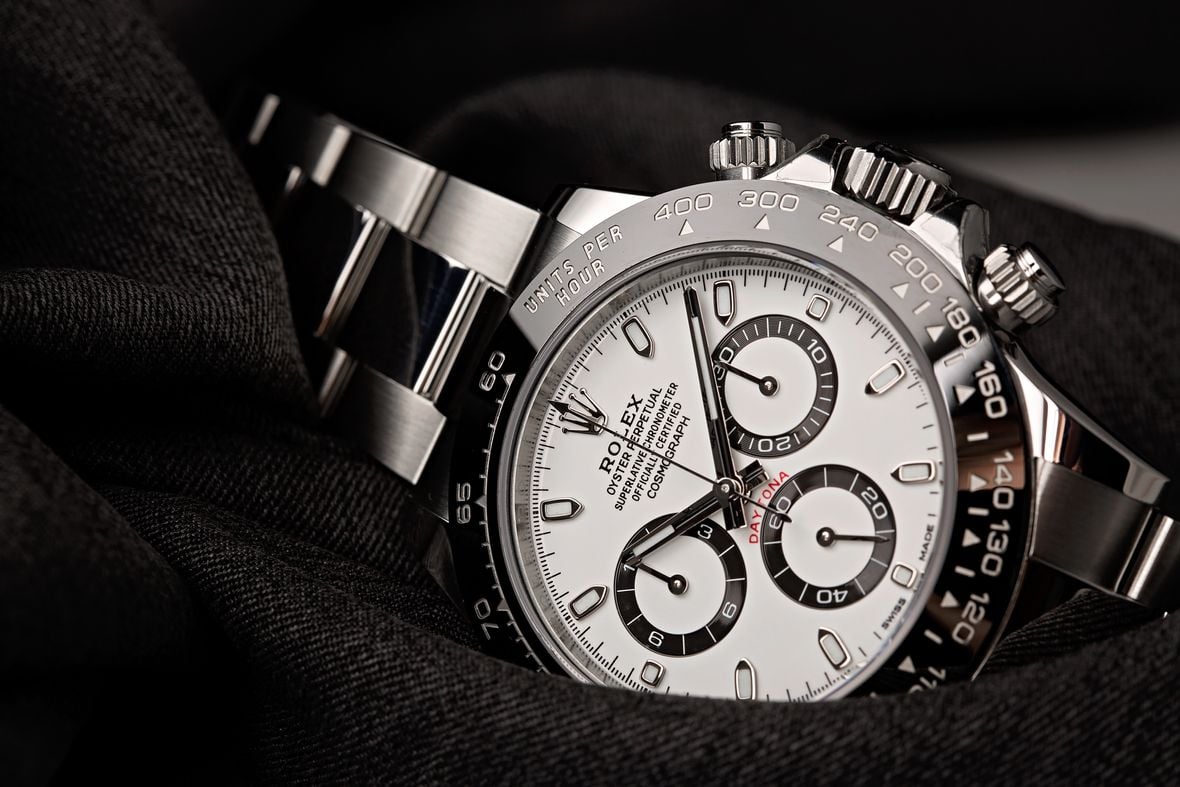
Oystersteel Case & Bracelet
The Rolex Cosmograph Daytona ref. 116500 features a 40mm stainless steel Oyster case outfitted with a Triplock screw-down crown with three sealed zones to ensure that the sophisticated technology inside is protected from water damage up to a depth of 100 meters (330 feet). The Daytona’s Oyster Case also includes a solid, screw-down caseback, along with screw-down chronograph pushers that prevent accidental operation while underwater.
The 904L stainless steel Daytona with a Cerachrom bezel is presented on a matching 3-link Oyster bracelet in stainless steel. Unlike older Daytona references, the current generation features completely solid links and solid end-links for a robust design that is more resistant to stretching and wear. Additionally, the satin outer links and high-polish center links of this stainless steel Oyster bracelet create a beautiful dimension and luxurious style that is perfectly suitable for work, leisure, or motorsports
Inside the clasp of the current Rolex Daytona is the brand’s proprietary Easylink extension system that allows the wearer to instantly lengthen (or shorten) the bracelet by approximately 5mm, completely on the fly and without the use of any tools. While it does not offer quite the same range of adjustability as the Glidelock extension found on Rolex’s various dive watch models, the 5mm provided by the Easylink system is more than adequate to ensure a proper fit during most activities.
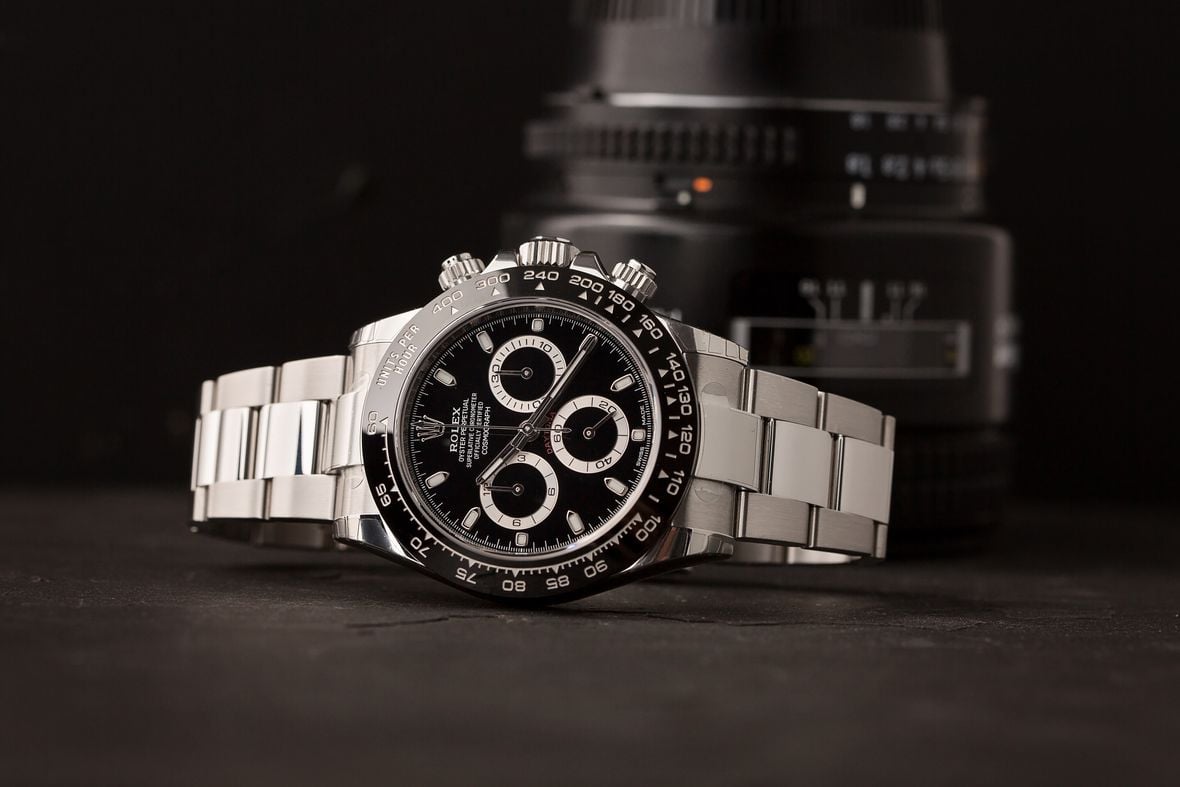
Classic Black or White Dials
While the bezel has been updated on the ref. 116500LN, the layout of the trio of registers on the dial remains the same on the new stainless steel Daytona. As is the case with all Rolex Daytona watches that are powered by the brand’s in-house Cal. 4130 movement, the reference 116500 features a 30-minute register at 3 o’clock, a running seconds indicator at 6 o’clock, and a 12-hour counter at 9 o’clock.
Just like the previous generation of stainless steel Daytona watches, Rolex offers two dial options for the Daytona ref. 116500LN: black or white. The white dial features black outlined registers and is particularly reminiscent of some vintage Daytona models, while the black variant is about as classic and traditional and you will get and features silver contrasting rings on its trio of chronograph registers.
Additionally, the black ceramic bezel outlining the dial of the ref. 116500LN offers a similar aesthetic to the black acrylic bezels fitted to certain vintage Daytona models such as the ref. 6241 and ref. 6263. However, unlike the older acrylic bezels that were prone to chipping and cracking, the new Cerachrom versions will maintain their appearance indefinitely. Today, both the black and white dials versions have their respective loyal fan bases and frankly, both are absolutely glorious.
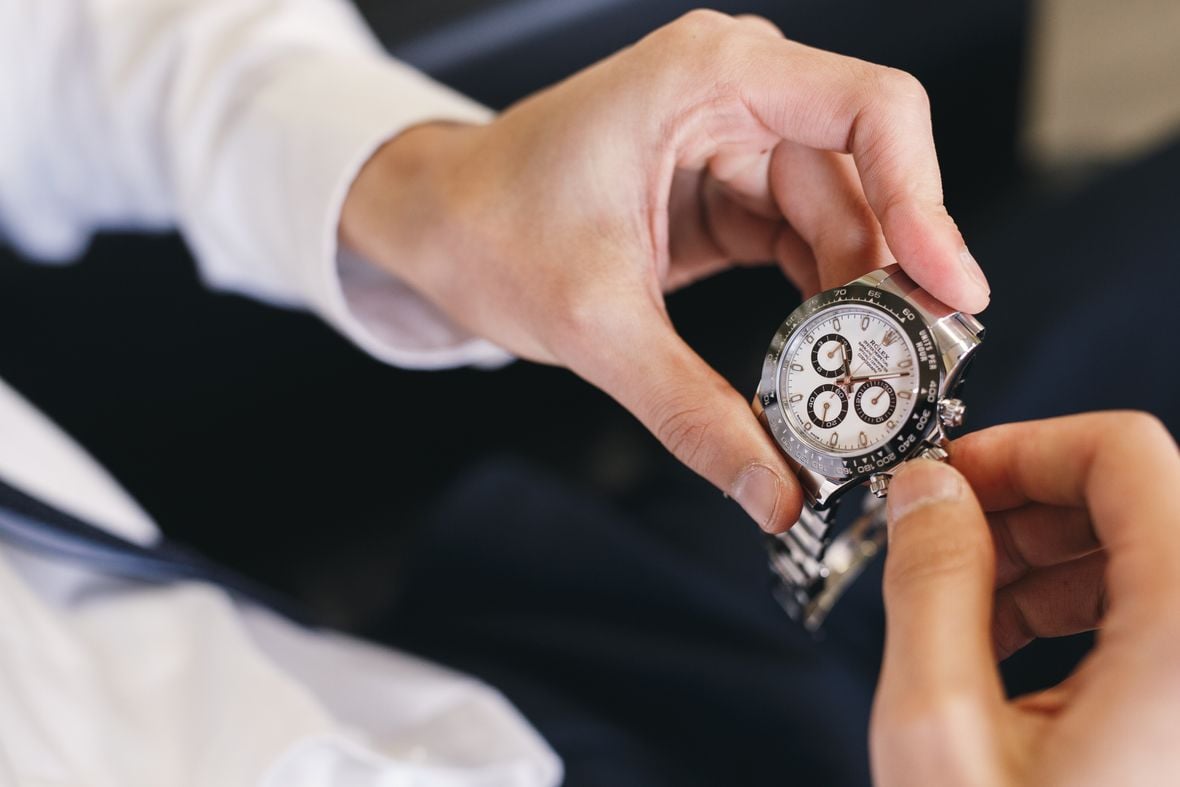
The In-House Rolex Caliber 4130 Movement
Under the hood of the new Rolex Cosmograph Daytona 116500 is the brand’s in-house Caliber 4130 self-winding mechanical chronograph movement. This is an incredibly important movement, as Rolex only introduced its very own, in-house chronograph movement in 2000, marking the third generation of Daytona watches.
The Rolex Cal. 4130 movement is built using fewer components than its Zenith-based predecessor for increased reliability, while the oscillator is furnished with the brand’s blue Parachrom hairspring, which is highly resistant to magnetic fields, temperature fluctuations, and shocks. The Caliber 4130 offers users a power reserve of 72 hours and is chronometer-certified, promising timekeeping accuracy within +2/-2 seconds per day.
Despite the fact that it is now been in circulation for more than twenty years, the Rolex Caliber 4130 is still widely considered to be one of the best automatic-winding chronograph movements available. Designed for reliability and precision above all else, both of these traits are incredibly important for a professional racing chronograph like the Rolex Daytona, which needs to work properly through every bump, vibration, and swerve on the racetrack.
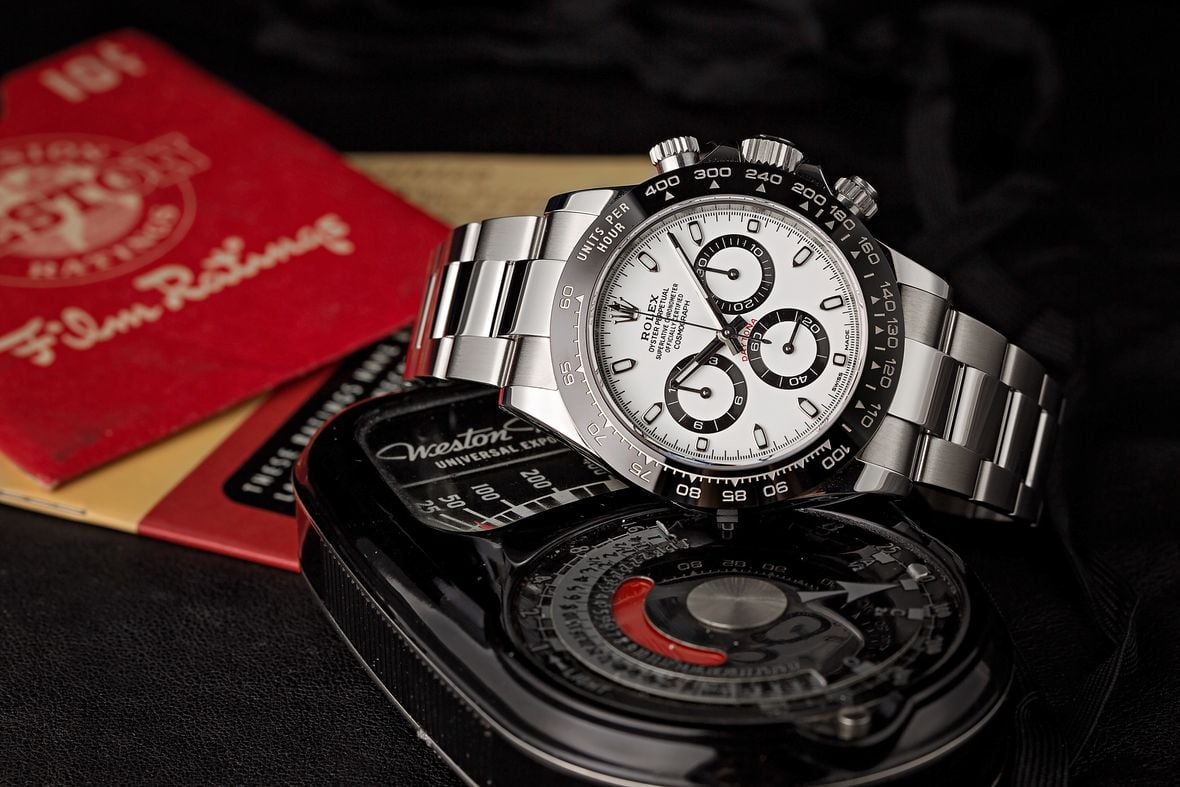
Rolex Daytona 116500LN Price and Availability
At the time of writing, the retail price for a brand-new stainless steel Rolex Daytona 116500LN is $13,150. However, this retail price isn’t an accurate reflection of the actual market value of this ultra-desirable watch. Because the production of the stainless steel Daytona is relatively fixed, demand for them is incredibly high, and every single retailer around the world has a lengthy waitlist for this model.
In fact, a brand-new stainless steel Rolex Daytona ref. 116500 watches consistently sell for between twice and three times their brand-new retail price on the secondary market, simply because buyers and collectors are willing to pay above retail to skip the multi-year waiting list. Today, used Rolex Daytona 116500LN watches routinely sell for between $35,000 and $45,000 with the white dial variants typically selling for slightly more on the open market.
Additionally, despite the fact that the stainless steel and ceramic Daytona 116500LN has now been available for more than half a decade and each year there are more examples in circulation than the year before, the watch still remains near-impossible to purchase at a retail level. Pre-owned prices continue to increase from one year to the next, and waiting lists at authorized retailers seem to only get increasingly longer.
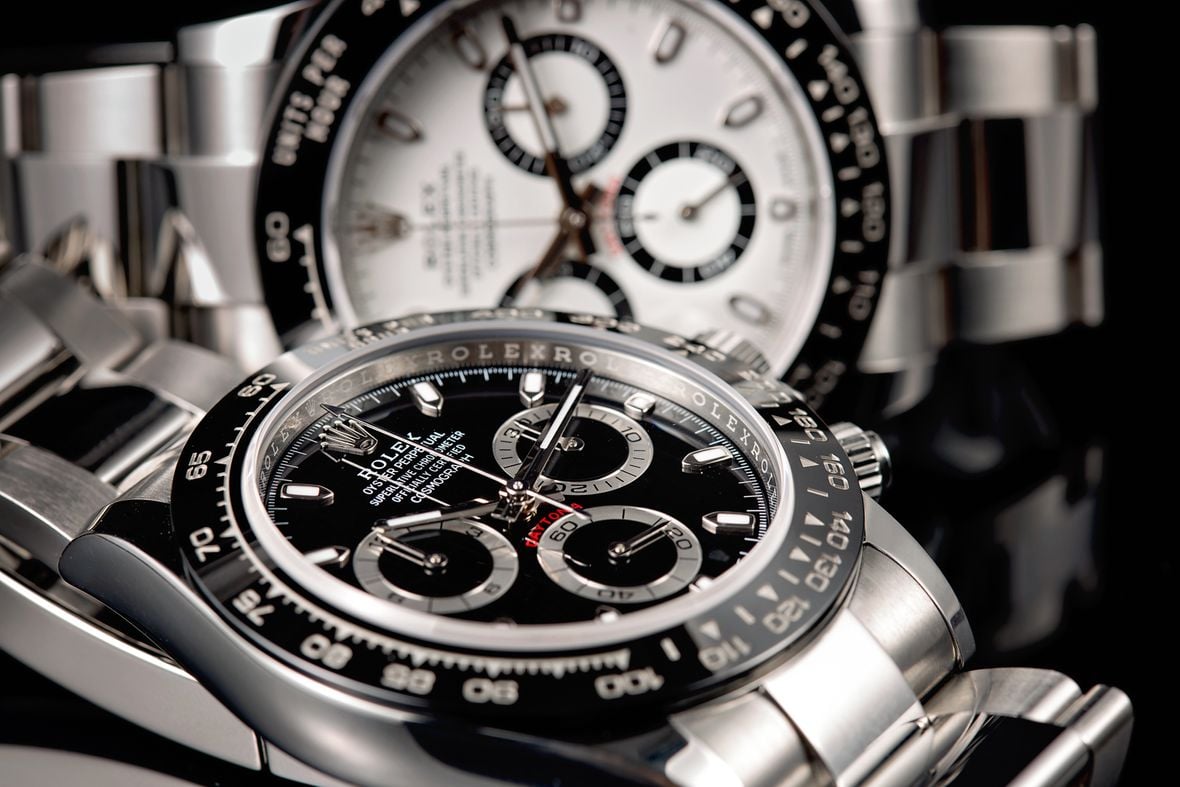
Frequently Asked Questions About The Daytona 116500LN
Given that the Rolex Daytona ref. 116500LN is easily one the most desirable (and hard-to-find) watches in the world, there are quite a few common questions about this iconic luxury timepiece.
How can I buy a Daytona 116500?
Bob’s Watches is the best place to buy a Rolex Daytona ref. 116500. While you can purchase this watch through a Rolex retailer or boutique, the problem is that you will be waiting for several years before you are actually able to get your watch, and even then, there is no guarantee that you will actually receive one at all before the model gets updated or discontinued.
Unless you plan on a multi-year wait, the pre-owned market is really the only place you can actually buy a Rolex Daytona 116500. You can shop our catalog of reference 116500 watches 24/7 on our website, and all of the watches you see are in-stock, available for immediate purchase, and backed by our lifetime authenticity guarantee.
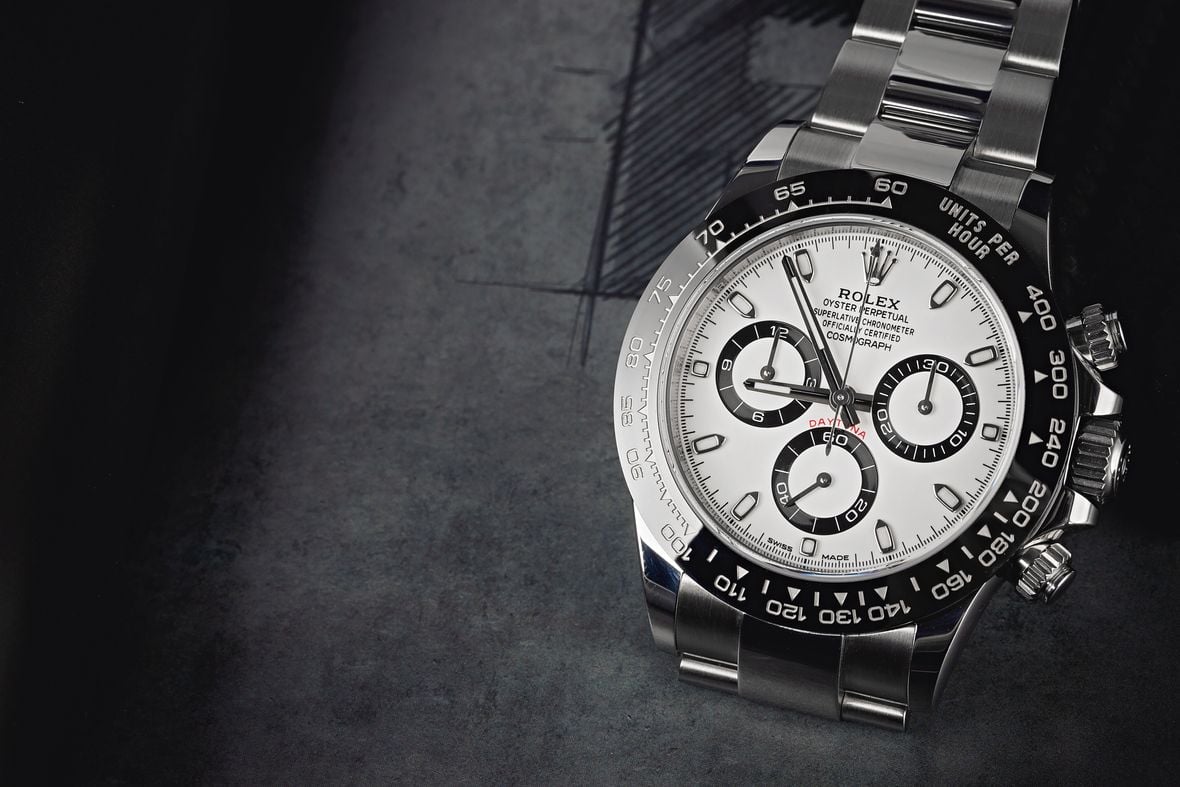
Why can’t I buy a Daytona 116500?
Unfortunately, it’s not as easy as walking into a Rolex retailer and asking to buy a new Daytona ref. 116500. Authorized retailers are all out of stock (as they have been for several years now), and every single Rolex dealer around the globe has a growing waiting list for the stainless steel Daytona, with countless names already ahead of yours.
So while you can purchase a brand-new Daytona via an authorized Rolex dealer or boutique, the waiting lists for a new Daytona can be several years-long. When you shop on the secondary market, you have the advantage of being able to purchase the ultra-exclusive Rolex Daytona 116500 without the wait. While you will pay a premium above retail, you can get a stainless steel Daytona, complete with its original box and papers, on your wrist today without any wait.
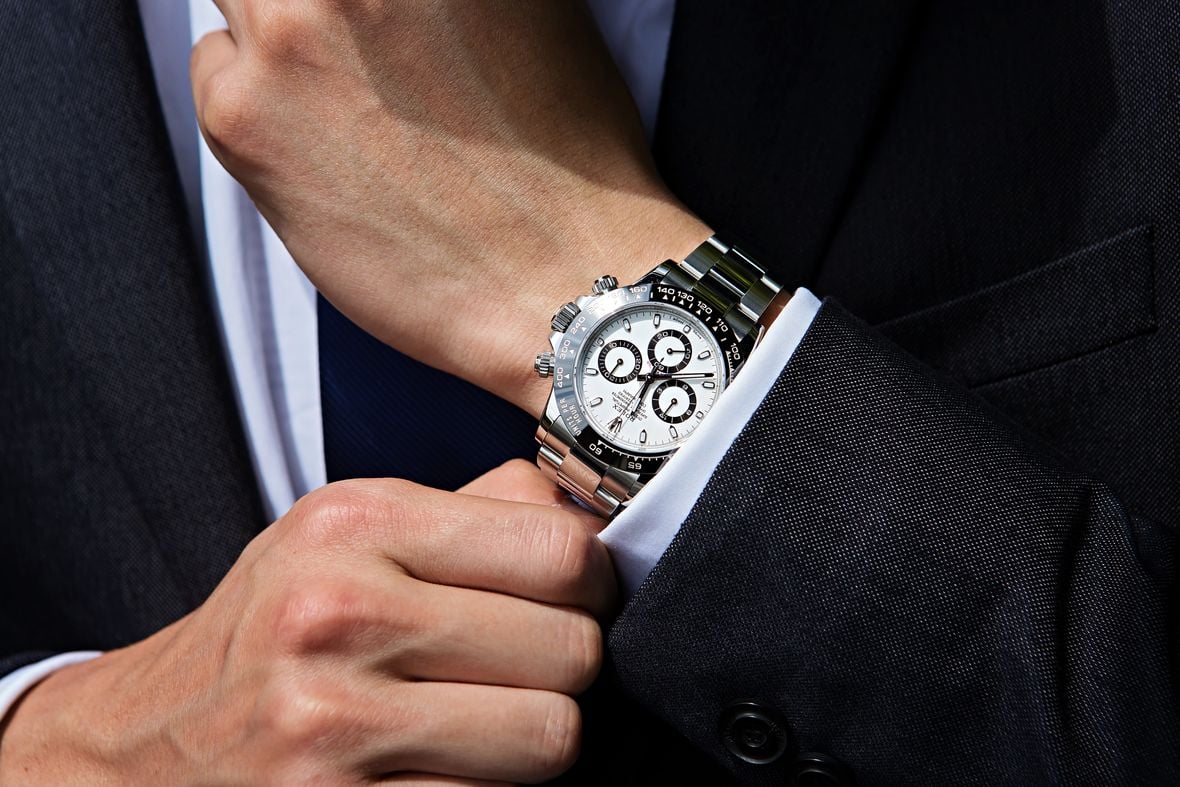
Why is the Rolex Daytona 116500 so expensive?
Rolex Daytona watches are expensive for a few different reasons. Firstly, there are a set number of examples produced each year, which makes them incredibly exclusive. Additionally, given that the stainless steel examples are the least expensive versions of Rolex’s iconic chronograph, there are more people able to purchase one compared to the more expensive, solid gold and platinum models.
Now, as for why used Rolex Daytona 116500LN watches are so much more expensive than their brand-new counterparts, this is solely due to demand far exceeding supply at a retail level. While you can (technically) buy a reference 116500 for $13,150, most collectors are willing to pay a premium to skip the waiting lists.
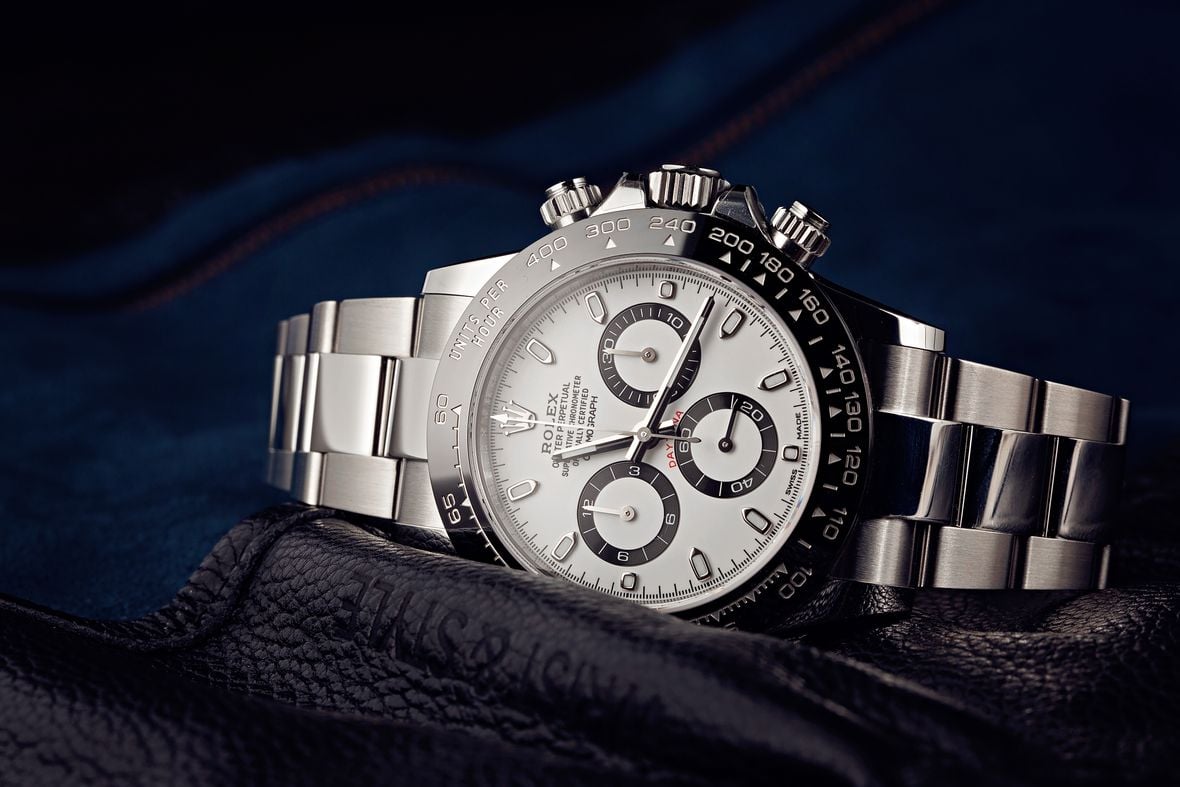
Is the Rolex Daytona 116500 a good investment?
While they are expensive, Rolex Daytona watches are generally very good investments. Vintage Rolex models sell for significantly more than their original retail prices, with some select models selling for hundreds of thousands of dollars. Even contemporary models that are still in production like the ref. 116500LN often sell on the secondary market for more than twice their brand-new retail prices, simply because they are so hard to find and exclusive to own.
As one of the most famous and desirable watches in Rolex’s entire catalog, demand for the Daytona 116500LN is likely to stay incredibly strong. The watch has had waiting lists at retailers since the morning it was first announced, way back in 2016, and we believe the ref. 116500LN is a great investment for watch lovers and serious collectors alike and will hold its value over the years.
